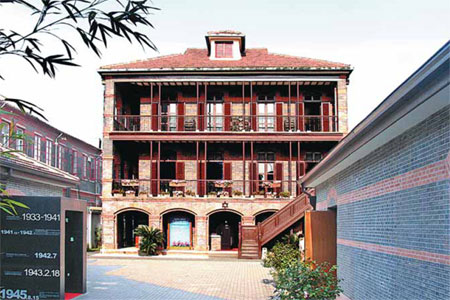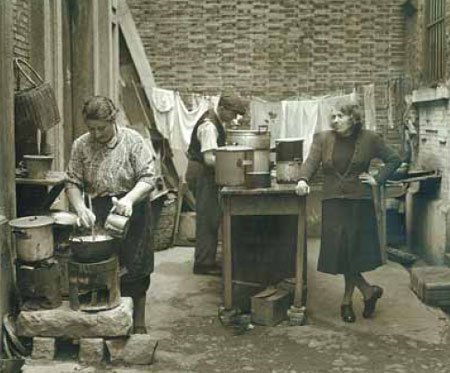Life during wartime in Shanghai's safe haven
Updated: 2014-03-19 08:29
By Zhao Xu (China Daily USA)
|
||||||||

Former refugees have fond memories of their stay in the eastern Chinese city during World War II, as Zhao Xu reports.
Editor's note: History is, by definition, about past events, and while nothing can be done to change those events, forgetting them may lead to the wrong roads being taken in the future. During the coming months, China Daily will present a series of regular reports about ordinary lives during World War II and the continuing impact of the conflict on the present and the future. This is the third report in the series.
The floor of the small courtyard at the Shanghai Jewish Refugees Museum is rough and craggy. Paved with stones salvaged from a renovation project in the area nearly a decade ago, the uneven floor is intended as a metaphor, evoking the tribulations endured by Europe's Jewish population during World War II and the rugged road they were destined to tread.
For many, Shanghai became a wartime home, a haven from the storms sweeping their homelands, but the relationship began abruptly. "They were totally unprepared for each other - the Jewish refugees and the city. But eventually they found a way to get along, and almost inevitably, fell in love," said Zhang Jian, deputy director of the Institute of History at the Shanghai Academy of Social Sciences. "While the Jews, mostly from middle-to-upper-class European families, had a really hard time getting used to the splendor and squalor of a city known as 'The Paris of the Orient', Shanghai for its part had never before seen such a large influx of foreigners within such a short period of time. In fact, their arrival drove up rental prices and tightened the already competitive job market in the area in which they congregated - Hongkou, or Hongkew, as it was called in those days," he said.
Zhang has spent the past two decades researching the history of the city's wartime Jewish population. "Around that time, Shanghai was effectively in a state of confusion. The Japanese seized the city in 1937 but had yet to establish a puppet government. Because war hadn't been declared between Imperial Japan and the Allies, the city's International Settlement, which first came into being as a result of China's defeat in the First Opium War (1839-42), was still under the control of Western powers.
"Back then, all those disparate factors conspired to make Shanghai almost the only port in the world that remained open to Jews," said Zhang. "Between 1937 and 1939, about 20,000 of them - German, French, Austrian and Polish - arrived by ship from Italy via the Suez Canal, and later by the Trans-Siberian Railway. Some traveled through northeastern China to reach their southern destination, while others even crossed the ocean to Japan before arriving in Shanghai.
Forging a foothold
"Overnight, they appeared among us, seeming to have come from nowhere," said Quan Furong, who lived with his family on Huoshan Road, a tiny section of Hongkou that was soon to become a foothold for the newcomers. "They slept on double- or triple-decker beds, learned to start a coal fire and to use the Chinese equivalent of a chamber pot - a large wooden device that had to be hauled outside to be emptied every morning."
Quan's father rented six rooms to asylum seekers and it didn't take long for the Chinese landlord to be impressed by his new tenants' business acumen. "I remember seeing some of my Jewish neighbors knocking on the door of our tailor shop trying to sell fabrics to my father. We were so impressed by the fact that they were able to find Shanghai's wholesale cloth market within a month of arriving," he said.
Gradually, the newcomers built a palpable Jewish center, transforming the area into "Little Vienna", complete with stores and beautiful roof gardens.
Some of those who endured those far-off days are determined not to let the memories fade. In June 2011, Vera Sasson, then 73, traversed the city's streets, holding a black-and-white photograph of a Chinese man she called "Uncle Chu".
In 1939, Sasson arrived in Shanghai with her family from Vienna. She was 8 months old. For the next 10 years, she grew up alongside Chinese kids and became a fan of "Uncle Chu", a 40-something neighbor. "He arranged for a personal rickshaw to take me to school and back home. After school the rickshaw dropped me off in front of 'Uncle Chu's' home, and he always insisted that I stay and have a meal with his family before going home," wrote Sasson in an e-mail exchange with China Daily.
Her search eventually led to the Shanghai Jewish Refugees Museum, previously the Ohel Moshe Synagogue in Hongkou district.
Chen Jian, the museum director, has overseen the building's transition from the center of the Jewish refugees' life to a monument. "Of all the holocaust museums, only ours tells a story of survival," he said.
One of those survivors is Betty Grebenschikoff, who arrived in Shanghai with her family in 1939, aged 10, little realizing that she would spent a decade in the city, more than 12,000 kilometers from home.
Footage shot by the museum during Grebenschikoff's last visit in November, the fifth since she returned to Europe, shows the 84-year-old in the cramped room in which her family once lived - an 8-square-meter second-story space with wide windowsills.
"My mother used to put rice out on the windowsills," she told a small crowd of residents and local media. "You let it sit there for four or five minutes and the bugs would come crawling out. My sister and I would count who had the most."
A story to share
Built in 1907, relocated to the current location in 1927 and renovated with special funds from the district government in 2007, the synagogue-turned-museum received more than 40,000 visitors last year, 55 percent of them from overseas.
"To be a tour guide in this museum is to be an accumulator of stories, stories buried but not forgotten," said 66-year-old Wang Yaohua, who for the past decade has guided visitors around the exhibits. "People come because they are interested, and there's often a definite reason behind that interest," he said. "Usually, a person won't let it show in the beginning. But as they view the black-and-white photos, a well-kept Torah, or a handmade chair in the typical Alpine style, you can sense the emotion welling up behind the calm facade, and sometimes you just know that person has a story to share."
A few years ago, Wang met a man who as a boy lived with his refugee family in an attic on the fourth and fifth floors of the synagogue. "The family was allowed to live there because his father ran errands for the elders. He was so thrilled to find some of the family's old furniture still there," said Wang.
The communal spirit helped, according to the former refugee. "The Jewish people were very much bound together," he said, referring to the crucial help given to refugees by co-religionists who had arrived earlier, including food, shelter and medication. "On summer nights after 7 pm, all the Jewish people in our neighborhood would come out onto the street. They listened to music, sipped coffee and chatted - information was exchanged that way."
Wang said the museum is playing an essential role in keeping the past alive. "At our museum, people revisit their parents, relatives and friends pasts, and even occasionally their own. They've contributed to the preservation of this past by sending us whatever has remained with them that could be woven into the narrative of this 'Once Upon a Time in Shanghai' story."
On Dec 7, 1941, the Japanese attacked Pearl Harbor, before declaring war on the Allies. The events had huge implications for Shanghai's Jewish residents. "Japan's alliance with Germany automatically increased the danger posed to the Jews," said Wang. "On Feb 18, 1943, the Japanese authorities declared a 'Designated Area for Stateless Refugees', ordering all those who'd arrived after 1937 to move into a an area of less than 2.5 sq km in the southeastern part of the Hongkou district. For the refugees who'd found a means of livelihood outside the designated area, leaving their homes and businesses behind for the second time was traumatic."
The area, known as the Shanghai Ghetto, had no barbed wire or walls, but the streets were patrolled, food was rationed, a strict curfew was enforced, and everyone needed passes to enter or leave. "Of the 14,000 Jews living inside, only about 3,000 were given passes between 1943 and 1945," Wang said.
Acquisition of a pass might subject a person to humiliation by Mr Goya, the Japanese head officer and self-proclaimed "King of the Jews", recalled Harold Janklowicz, during an interview for the 2002 English-language documentary film Shanghai Ghetto. "Mr Goya was a very short, little man, and my stepfather, Werner, was a very tall man. The little man didn't like that. He jumped on the table and slapped him across the face, and yelled at him to get out and said 'No pass'," recalled Janklowicz. "I remember Werner coming home that day and he was a shattered, broken man."
Even after all these years, Chen still ponders one question. "Why didn't the Japanese kill the Jews? That's an inevitable question with open answers," he said. "One prevalent view is that the Japanese didn't want to antagonize the Jews because they were thought rich and powerful."
"All I can say with certainty is that while the Japanese, in not slaughtering the Jews, were carrying out a well-calculated governmental edict, the local Chinese, in living with and befriending them, were acting out of natural sympathy," he said.
Zhang Jian, deputy director of the Institute of History, Shanghai Academy of Social Sciences, said: "For Jews living in Continental Europe, the candles of hope had been snuffed out one by one since 1933, the year the Nazis came to power. Synagogues were burned, Jewish shops were wrecked, assets confiscated and men thrown into concentration camps."
A divided world
The masses were desperate to seek asylum abroad, "the world seemed to be divided into two parts - those places where the Jews could not live and those where they could not enter," wrote Chaim Weizmann, Israel's first president, in 1936.
"Both the United States and Britain refused to accept any more refugees in substantial numbers, and all the other countries followed suit. All around, the embassies were shutting their doors, and countries closing their borders," he wrote. "That was when rumors started to circulate in Vienna about a place where one could actually go without a visa."
Shlomo Aouizerat, a French rabbi who now lives in Shanghai, said: "Of course I'd heard before about the Japanese invasion of China. But I only started to understand the gravity of the situation when I came here seven years ago. Keeping in mind that people in great pain tend to develop animosity toward others who have suffered less, it's remarkable that the Chinese, themselves being murdered and severely maltreated, didn't withhold their help when it was needed by others."
In August 1945, Japan surrendered, and on Sept 3 that year, the ghetto was officially liberated. In the next five years, almost all the Jewish refugees left Shanghai to start new lives elsewhere.
In 1939, 13-year-old Michael Blumenthal arrived in Shanghai with his parents and stayed until 1947. In his autobiography, From Exile to Washington, the former US treasury secretary wrote about the experience. "I thought life was passing me by and that those were wasted years. Yet I now realize that I was wrong. The tough refugee years were precious lessons for the future; I lived them intensely, and they taught me much that was valuable and that I might never have learned in normal circumstances," he wrote. "Today I am grateful for that."
During her 2013 visit, Grebenschikoff donated her handmade wedding dress to the refugee museum, where she married in November 1948.
And in November 2011, five months after Sasson's visit to find "Uncle Chu", the refugee museum, aided by the local population bureau, finally managed to find Chu's daughter, with whom Sasson regularly played as a little girl. The old man had passed away, but the "sisters" shared an online video chat. "I promised you we wouldn't have to wait more than 60 years before we saw one another again," said Sasson, from her Florida home. Age can play strange tricks, and in fact, 65 years had passed since her family's departure, but the promise had not been forgotten.
Contact the writer at zhaoxu@chinadaily.com.cn
|
The Ohel Moshe Synagogue was built in 1927 to commemorate Moshe Greenberg, an early leader of the Jewish community in Shanghai. The building is now a museum dedicated to preserving the memory of the city's Jewish inhabitants during World War II. Provided to China Daily |
|
A woman uses a small Shanghai-style coal-fired stove to cook food in a courtyard kitchen. Provided to China Daily |
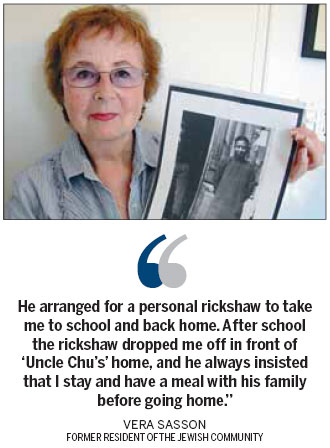
(China Daily USA 03/19/2014 page7)
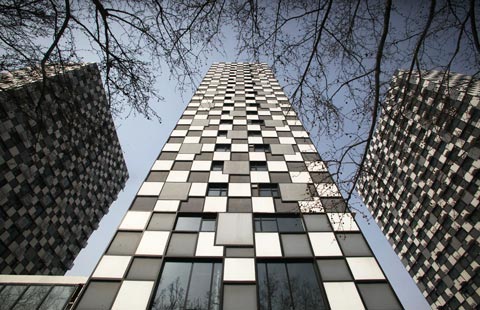
 Skyscrapers in E China resemble LV check pattern
Skyscrapers in E China resemble LV check pattern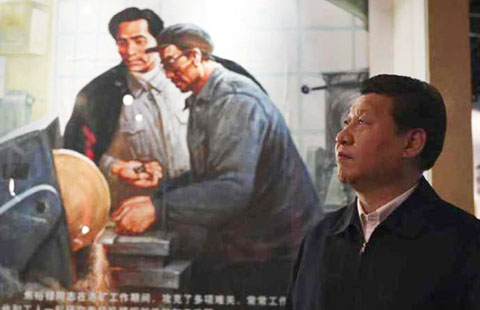
 President Xi honors memory of devoted county Party chief
President Xi honors memory of devoted county Party chief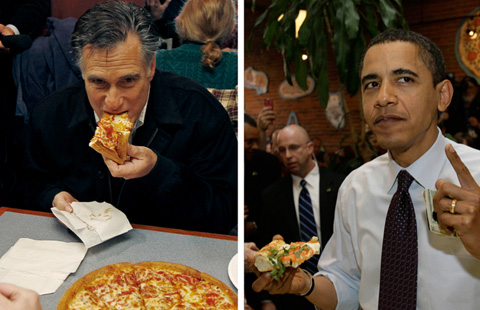
 More than just food
More than just food
 Miss world visits cancer children in Colombia
Miss world visits cancer children in Colombia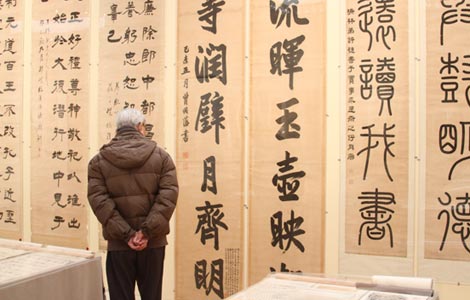
 Chinese paintings exhibited at Sotheby's
Chinese paintings exhibited at Sotheby's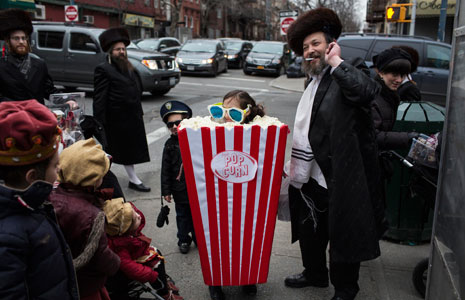
 Jewish holiday of Purim celebrated in US
Jewish holiday of Purim celebrated in US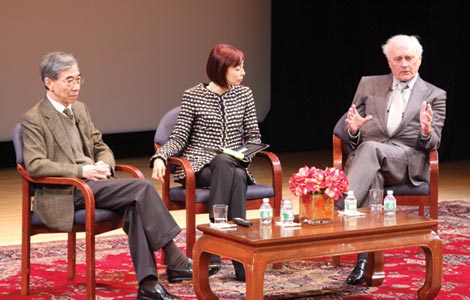
 Nurturing the art scholars of tomorrow
Nurturing the art scholars of tomorrow-
 Skyscrapers in E China resemble LV check pattern
Skyscrapers in E China resemble LV check pattern
Most Viewed
Editor's Picks

|
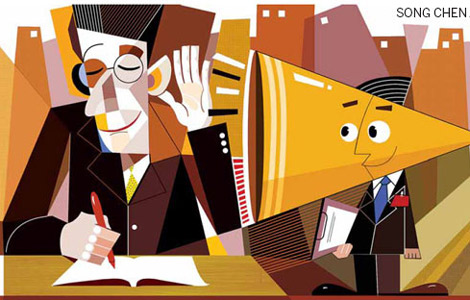
|

|

|

|

|
Today's Top News
Tourists offered compensation for bad air days
US first lady's China visit to boost relations
New US envoy hits ground running
Tourists offered compensation for bad air days
Thai radar may have detected missing Malaysian jet
Chinese authorities upgrade food waste fight
Textiles creats for jobs in Xinjiang
First lady's China trip aimed at better ties
US Weekly

|

|
